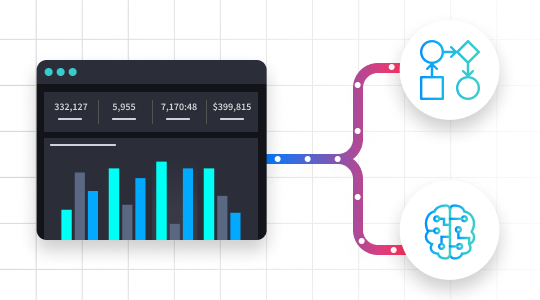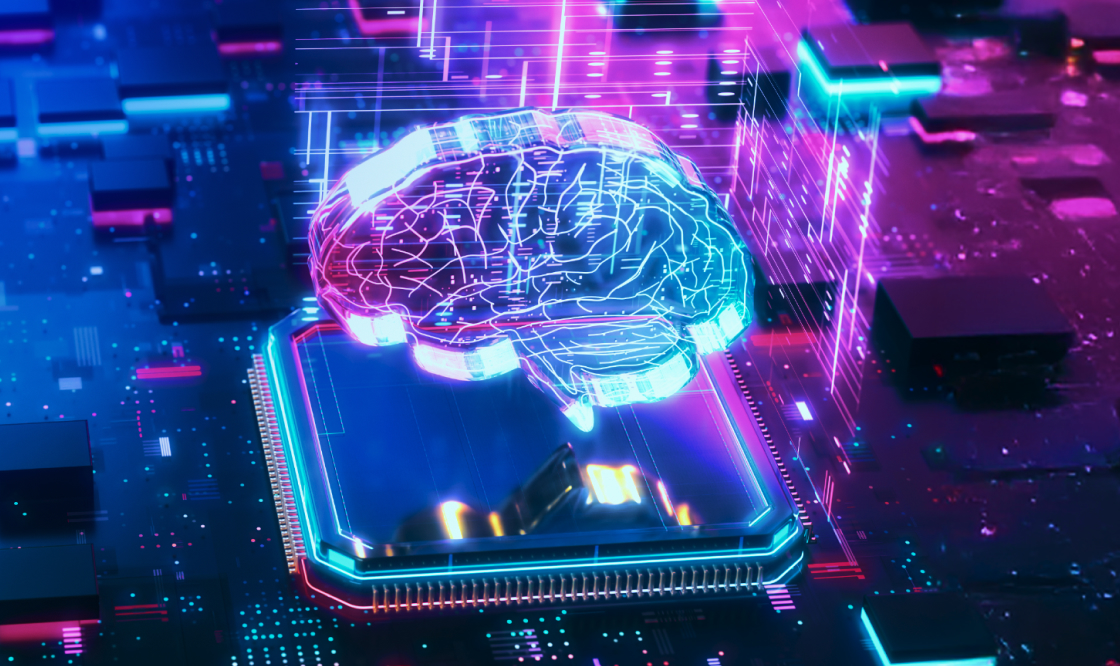How AI is Improving Cybersecurity Through Automation – AI Security Automation
AI significantly enhances cybersecurity through automation by providing enhanced contextual information, enabling better signal-to-noise ratios, and ultimately reducing response times. This powerful combination allows security teams to identify, prioritize, and respond to threats with unprecedented speed and precision, augmenting human capabilities to manage the growing complexity of the threat landscape.
What’s the first thing that comes to mind when you hear the words “security automation”? For many in the cybersecurity industry, its automated response actions. However, this is only part of the story and frankly, the easier part to implement.
The true challenge in cybersecurity automation lies in effectively ingesting, correlating, enriching, aggregating, and processing vast amounts of data from diverse sources. This complex data must then be presented precisely to enable human decision-makers to act at the optimal moment. This critical cybersecurity problem, one that security automation has tackled for nearly a decade , is precisely where artificial intelligence offers significant improvement.
This blog will explore how AI and security automation work together to enhance cybersecurity, focusing on the powerful synergy that empowers security operations.
How AI is Disrupting Security Automation
While there’s no magic bullet for security operations, the combination of AI and security automation is powerfully enabling teams with richer contextual information, improved signal filtering (better signal-to-noise), and ultimately, faster response times. Both technologies empower computers to perform tasks traditionally handled by humans. Many organizations are already familiar with automation in security, and this experience, particularly the importance of keeping humans in the loop, significantly informs how AI should be used within SecOps. Defining the roles of AI and automation is crucial because AI is fundamentally reshaping cybersecurity as we know it.
AI is disrupting cybersecurity from every angle. The concept of offensive AI is now a tangible reality, with AI cybersecurity threats encompassing malicious uses like AI deepfakes, swarm malware, machine learning zero-day attacks, and AI-powered phishing. Conversely, numerous AI cybersecurity companies are developing AI-driven products that specifically aid and empower SecOps teams to secure their organizations more effectively.
The emergence of generative AI in cybersecurity stands out as one of the most significant revolutions this year. Some security professionals are already adopting ChatGPT cybersecurity strategies, while others remain cautious due to the unknown implications. From a CISO’s perspective, generative AI tools like ChatGPT should be considered a security risk, necessitating intelligent use paired with robust controls.
For CISOs, navigating the abundance of AI cybersecurity companies to discern genuine, trustworthy technology from mere marketing hype can be challenging. The core purpose of AI in cybersecurity should be to augment human capabilities, enabling security professionals to perform their jobs more effectively than ever before. This includes supporting threat detection and prevention, providing predictive analysis, enhancing the automation of security tasks, conducting behavioral analysis, preventing phishing and fraud, and improving incident response. As AI continues to disrupt cybersecurity, we must critically consider its future implications. The future of AI in cybersecurity demands attention to privacy concerns associated with popular large language models; it needs to be transparent, private, and promote the secure use of such a powerful technological advancement.
How is AI Improving Cybersecurity?
Together, automation and artificial intelligence have the power to be the ultimate human enabler. Neither will replace the value of the human mind. Instead, they can empower humans to make the right decisions faster, and more effectively through AI enabled features like:
- Threat detection, intelligence & prevention
- Real-time monitoring & prioritization
- Behavior analysis
- Case summarization
- Predictive analysis
- Anomaly detection
- Deception technologies
As different types of cybersecurity attacks and threats become more sophisticated, AI is a crucial tool in helping organizations stay ahead and protect their digital assets.
Examples of AI in Security
Just like how security orchestration and automation can be applied to every aspect of cybersecurity, so too can artificial intelligence. Here are a few AI automation use cases of how AI is being applied to cybersecurity functions and processes.
AI in Network Security
Network security strategies date back to the era of castles and moats, and even it is not immune to the disruption that is AI. As networks, and the data that resides in them, become increasingly dynamic it is critical that network security teams have the latest technology at their disposal. AI in network security can help enhance threat detection and intelligence signals or even recommend the optimal automated response action.
AI Data Security
Data is the crown jewel of any organization, so effective data and information security is critical. AI and automation can help SOC teams keep pace with the increasingly common threat of data breaches and unauthorized access to sensitive data. Modern AI information security strategies focus on data classification and encryption, monitoring controls and authentication + authorization, behavioral analytics, insider threat detection, risk mitigation to name a few.
AI and Governance, Risk and Compliance (GRC)
AI has an important role to play in enterprise risk management, corporate governance, and compliance strategies. GRC platforms are increasingly leveraging AI to assist with risk detection, auditing, horizon scanning, policy management, and regulatory change management. This is particularly beneficial in the context of internal controls, financial risks, and ensuring business resilience. In fact, AI-enhanced automation is becoming a critical component for achieving compliance audit readiness.
Some of the latest developments in cybersecurity AI are also closely related to the Biden Administration’s executive order on the safe, secure, and trustworthy development and use of artificial intelligence, further underscoring AI’s growing importance in the GRC landscape.
AI-Driven Threat Intelligence
Threat intelligence solutions provide cybersecurity teams with value in three main areas. First, they are built to be able to acquire information from extensible data sets. Then, they aggregate telemetry from multiple formats and types to provide unique insights. Finally, they present the information in a way that can trigger automated actions. AI is increasingly being used by threat intelligence providers to help during the aggregation and action phases. It helps to prioritize the right intelligence and assist in recommending response actions.
AI in Vulnerability Management
AI is transforming vulnerability response management by making it significantly more efficient and effective. It tackles the traditional challenges of overwhelming data, slow prioritization, and delayed remediation.
AI enables intelligent data enrichment and risk-based prioritization. It normalizes data from various sources and enriches it with crucial intelligence like exploitability, asset criticality, and dynamic risk scores. This helps security teams focus on the highest actual risks, not just the most severe vulnerabilities.
Pros and Cons of AI in Cybersecurity
Nearly every cybersecurity function, and most security practitioners, are embracing the use of artificial intelligence. Some are jumping on the bandwagon without hesitation, while others maintain a healthy skepticism about AI. Regardless of where you find yourself on this spectrum, here are some pros and cons to consider.
Pros
Some of the many security functions that benefit from the application of cyber AI include:
- Threat Modeling
- Threat Detection & Incident Response
- Alert signal-to-noise ratio
- Behavioral Analysis & Analytics
- Vulnerability & Patch Management
- Adaptive Defense
- Deception Technologies
Cons
Emerging technologies, especially AI, come with their own risks. It’s important to be aware of the dark side that comes with the growth of AI adoption, including:
- Offensive AI and ethical considerations
- Data privacy concerns
- AI programmed bias, training and maintenance
- Lack of transparency
- Misuse and attacks
- Compliance and regulations
The Future of AI in Cybersecurity
So, how will AI impact the future of cybersecurity? If I were a better man, the future of cybersecurity with AI will feel like cybersecurity today but on steroids. Adversaries are constantly becoming more frequent and more sophisticated, AI will perpetuate this reality. SecOps is a highly complex and nuanced discipline, AI will have a mix of positive and negative impact on the cybersecurity complexity problem. Ethical considerations and regulations are being defined in real time, we have seen this with emerging technologies of the past. Security leaders will need to plan strategically and focus on security awareness training.
A world with AI is a new reality. But at the end of the day, AI will never replace the power of the human mind. In a future with AI, fundamental SecOps principles will be more important than ever.
Curious how AI can transform your security operations? Learn more about how Swimlane Turbine is leveraging AI automation. This powerful combination allows organizations to build and apply automation across a vast array of security functions, including traditional SecOps, fraud detection, OT, cloud security, compliance, audit readiness, and more. Swimlane Turbine helps you adapt to an evolving threat landscape and drive efficiency throughout your entire security ecosystem.
TL;DR: AI Security Automation
AI fundamentally improves cybersecurity automation by enhancing data processing, intelligence, and response times across security functions like vulnerability management, GRC, and threat intelligence. While introducing new challenges, AI primarily augments human security teams to tackle increasingly sophisticated threats, making security operations more efficient and effective.

Swimlane Turbine Demo
See how Swimlane Turbine can help you and your SecOps team hyperautomate by requesting a demo below


